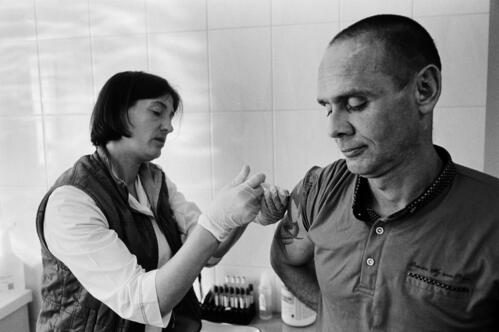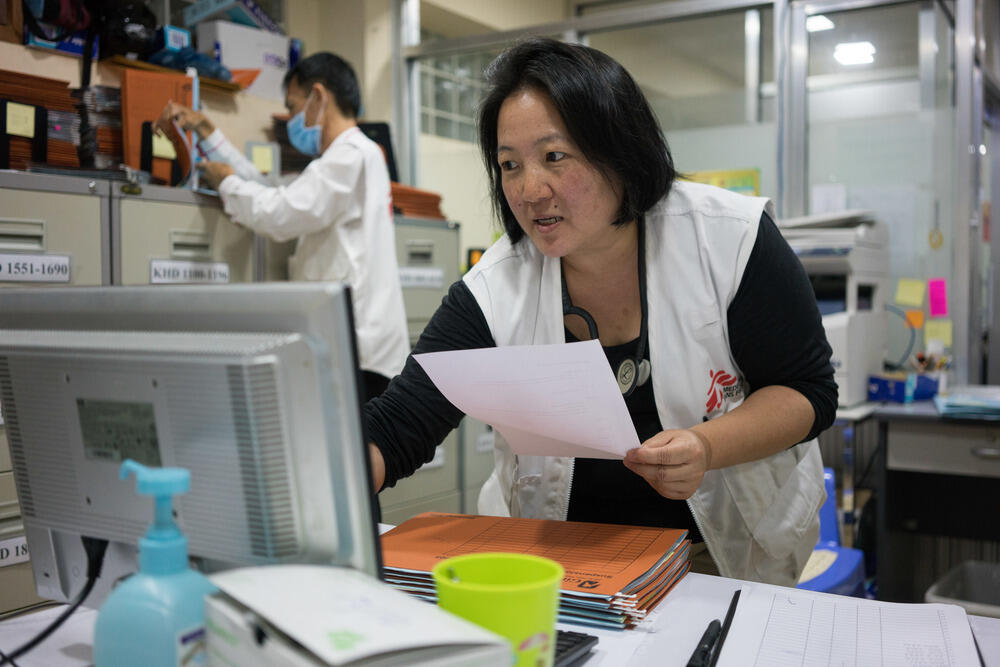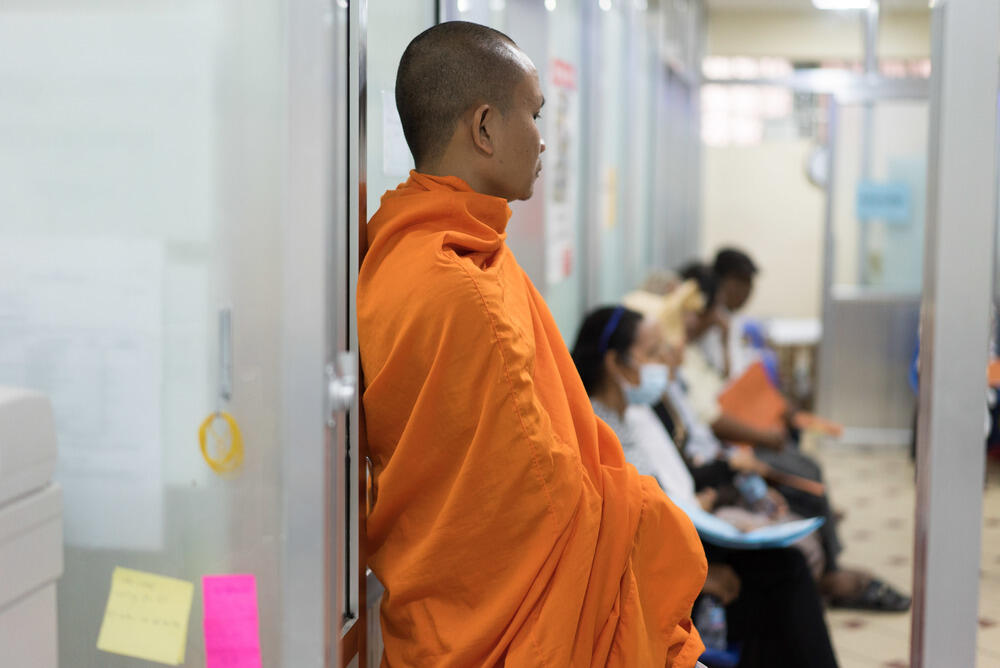Cambodia: Duelling hepatitis
When not seeing patients in clinic, I've been writing guidelines on how we should manage patients who are chronically infected with both hepatitis B and C.
I call this, not affectionately, duelling hepatitis. It's not something I've ever had to grapple with before, because in the US the incidence of hepatitis B is low, even though there is plenty of hepatitis C to go around.
Here in Asia, there is a 5-10 percent prevalence rate of hepatitis B alone, which makes it endemic to the area. Not surprisingly, we are seeing 3.4 percent of our patients with both infections.
Either infection alone can cause cirrhosis or hepatocellular carcinoma (a type of liver cancer), but together the risk is magnified. The viruses cause similar disease but behave differently at the cellular level. The viruses cause similar disease, but behave differently at the cellular level.
Hepatitis B hides inside the cell to reproduce but has stable proteins on its surface, which means that it is easy to vaccinate against, but hard to treat once the infection is present.
Hepatitis C reproduces itself in the open, which makes it easy to treat, but comes in six genotypes and almost innumerable serotypes, which makes it very difficult to create a vaccine for it. This is why we're providing treatment for hep C and advising patients who don't appear to have been infected with hepatitis B to get vaccinated: we're playing the best hand for each virus.
Some people have evidence of both infections at the time of diagnosis, and this opens up a whole other can of worms.
Dual infections
For most people with evidence of liver fibrosis, or chronic scarring, most of the disease is caused by the hepatitis C portion of the dueling hepatitis, so they should be treated with direct-acting antiviral (DAA) medicines. These are easy to deliver and have few side-effects, so it should be easy, right?
Wrong. In some patients with both infections, active hepatitis C actually suppresses the activity of hepatitis B. Curing the hepatitis C may actually remove the suppression, and allow hepatitis B to take off, which means the patient trades one liver-killing infection for another one, which is a lot harder to treat.
With hepatitis B, even if you have got all of these tests on your patient, you still might not know what's going on.
If it hasn't been done before, you can't expect the side issues that arise while you're doing it to have easy solutions.
What makes all of this worse, hepatitis B has really complicated serologies, which in layperson's language means there are a whole slew of blood tests related to the diagnosis, some of which are abnormal right after infection, some which only appear months or years after infection – and none of this happens on a strict time schedule, so even if you have gotten all of these tests on your patient, you still might not know what's going on.
This is why most doctors, even after many years in practice, need to look up the diagnosis of hepatitis B every single time they are faced with the problem, and why almost all of us have shrugged at one point in our careers and said, 'I don't know, let's just keep an eye on the patient and see what happens.'
Innovative thinking
Which isn't really an option for our hepatitis C treatment programme. Our goal is to offer DAA treatment to as many hepatitis C patients as possible, which means we have a full clinic every day, and not a lot of time or resources to hem and haw about whether someone's hepatitis B is immune tolerant, immune active, inactive or immune reactive. (This is a whole lot of hepatology shop talk. I'm going to have mercy on you and not bother to explain it here.)
The fact that I can even begin to explain all of this is the end product of having read about 500 pages of hepatitis B and C guidelines, making several kilos of notes, and writing proposals, which is why my non-clinic working days look like this:
We are considering guidelines which would treat hep B pre-emptively in patients who have markers for active infection, starting treatment for both B and C at the same time, and stopping hep B treatment once DAA therapy is completed and the coast is clear, because many patients with hep B alone burn through their infection without further damage to the liver. (Again, that is shop talk and I will spare you the gory details.)
This is a strategy which has been suggested by some expert associations, but which doesn't have decades of history behind it. As I've been struggling to teach myself about dueling hepatitis, I've realised that this is the kind of innovative thinking you have to stretch your mind around when you take on a large-scale treatment programme like the one MSF is providing in Cambodia.
If it hasn't been done before, you can't expect the side issues that arise while you're doing it to have easy solutions.

More on MSF's work on hepatitis
An estimated half a billion people are currently infected with viral hepatitis
MSF in Cambodia
Having endured civil war and the murderous rule of the Khmer Rouge in the 1970s, the southeast Asian nation of Cambodia now enjoys relative stability. Médecins Sans Frontières/Doctors Without Borders (MSF) started working in Cambodia in 1979 and is currently focused on tackling hepatitis C and malaria.
Launched in May 2016, our hepatitis C programme offered the first free treatment for the blood-borne virus in the country and we continue to develop more effective diagnosis and treatment strategies.
Our malaria research project in northern Cambodia was set up to find ways to eliminate malaria in an area where there is multidrug resistance.

